By Ambassador Viktor Lyagushkin
This photo was taken in 2018 during my project Until the Ice Melts. Taking wide shots is not a trivial task in the White Sea. All underwater photographers know that each water body has its own specifics: transparency, water color, the number and size of floating particles in the water column, the presence of algae that absorb light - these and many other factors make any sea, lake or river different. They vary so extremely that any proficient artist is able to determine where this or that picture had been taken.
The White Sea is a very difficult location, especially in winter. The ice shield limits the amount of light that enters the water, and small, single-celled algae which actively absorb light, begin to multiply, this makes the water of the White Sea to acquire a characteristic saturated green color.
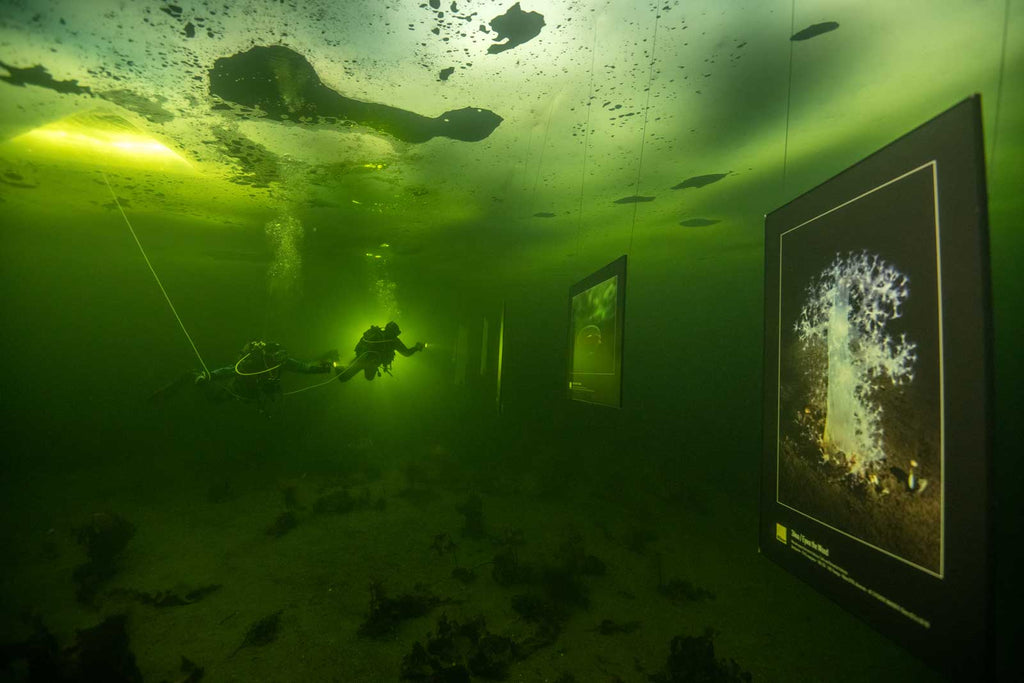
Divers admire Viktor's Until the Ice Melts exhibit beyond the Arctic Circle in the White Sea. The pictures looked like portals to another world; as if the image in the photo was even more real than the surrounding reality.
I really wanted to describe my admiration for the majestic ice ridges and the harsh beauty of this northern sea. I started thinking about the frame. In April, the sun already rises quite high and beginning to help photographer, drawing the smallest shadows of ice bands and cracks. But there was a huge difference in brightness between the ice hummocks and the dark bottom, so I decided to align it with the help of strobes.
I took two Ikelite DS160 strobes to cover the foreground. I decided to place the scuba diver on the right side of the picture. The human figure in the frame occupies a dark background, completes the composition and serves as a “ruler”. It helps a viewer understand how big are the other objects in the frame. To make a silhouette of my model visible against a dark background of water, I connected two other strobes on one handle, turned them on at full power and handed it to my assistant, who had to swim behind the model and create backlight.
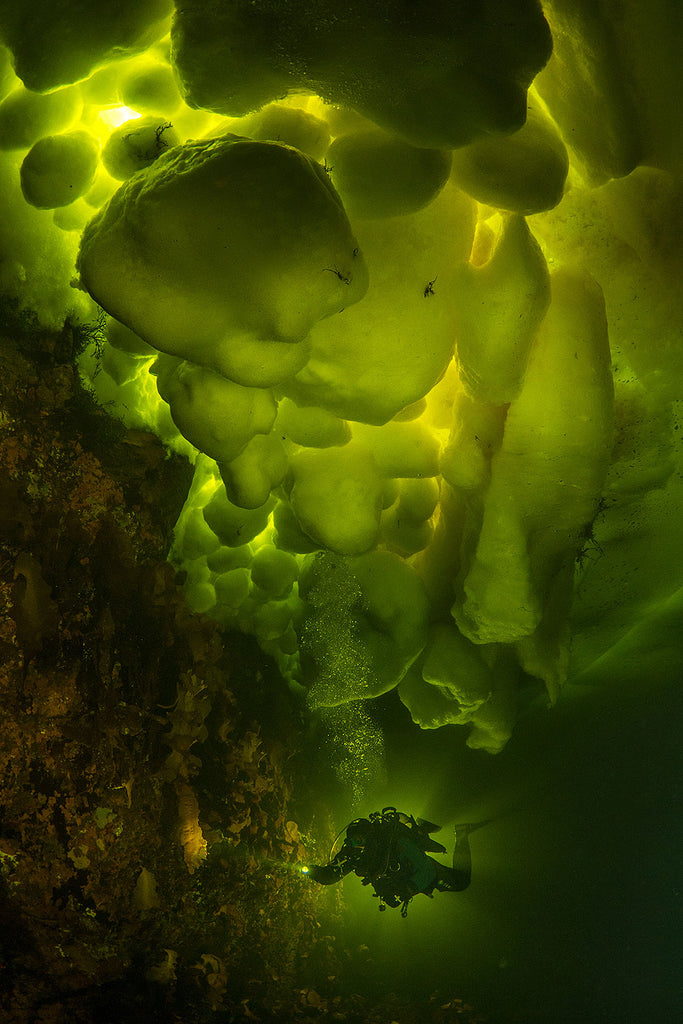
The Shot: A diver backlit by DS160 strobes underneath the ice in the White Sea. An assistant swam behind the diver with two hard-wired strobes to create the backlighting effect. Arctic shield is melting due to extreme temperatures and within a decade the White Sea will lose its season ice. This will lead to endemic species extinction.
It remained to figure out how to synchronize the strobes. In dark water, light synchronizers do not work stable on big distance, and I decided to use an electric cable. The cable helped to solve another problem - to ensure the safety of the assistant. According to the standards for ice diving scuba divers must be tied with a strong rope, to have possibility to communicate with the surface and to find their way home.
The diving director of the Arctic Circle Diving Center agreed that tying an assistant to me was a good idea, but found the cable not reliable enough to pull a scuba diver, so we duplicated the cable with a thin but strong Kevlar rope.
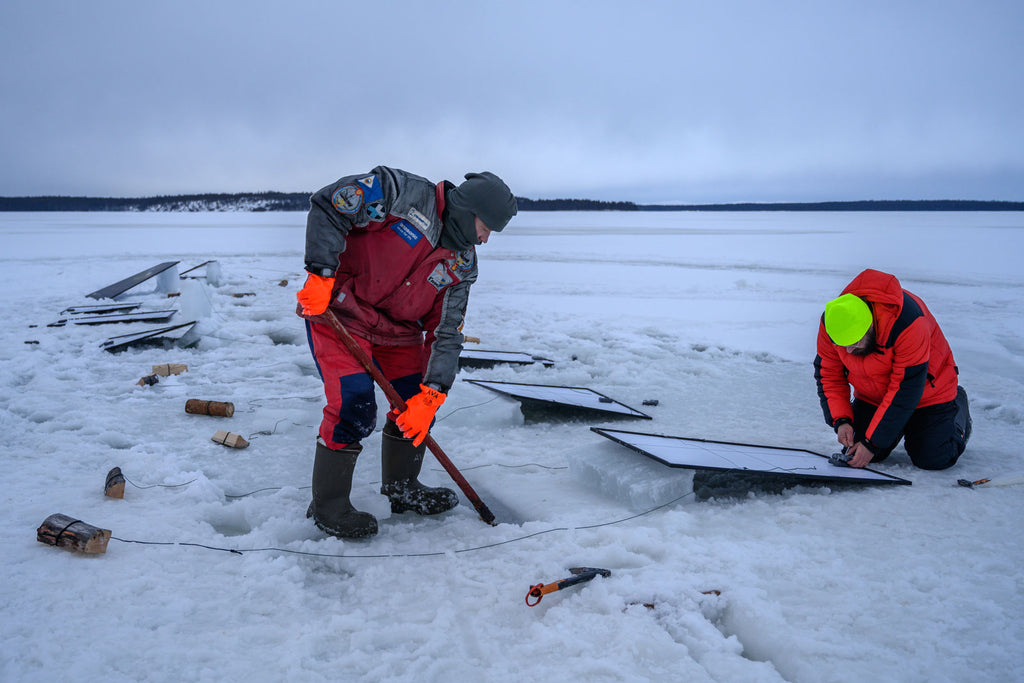
The difficult work of preparing to suspend Viktor's photographs beneath the ice for this unique exhibit. The ice was marked with a tape measure, then narrow lanes were cut. The prints were weighted with lead and strings were attached to ordinary pine wood blocks on the surface of the ice. The rope color was chosen to be inconspicuous once in the water.
It remains to explain to my team what to do. We agreed that first we go to the right along the wall as far as possible, for the entire length of the safety rope, and then we return back, making photos along the way. I'll swim first, my model follows me, and the assistant will be behind him. If I see a place good enough for shooting, I stop and turn around, and my assistants stop with me. The model should hang on a certain distance from hummocks, and if I am not satisfied with his location, then with the help of signs I ask him to change something. Then I compose the frame, looking into the viewfinder, and the assistant must follow me and always stay on the same line with me and the model, otherwise he will flash out in my lens and destroy the frame. Because Ikelite DS160 flashes have a pilot light that helps us locate each other. We practiced on land, made sure that all team members understood my instructions correctly and went under the water.
It sounds difficult, but no issues arose, since we use this light scheme for a very long time, and the experience allowed us to take this picture during one dive.
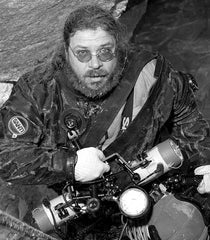 Ambassador Viktor Lyagushkin got into diving by chance and quickly became absorbed in the world of technical diving. Viktor is a master of light, sometimes using dozens of strobes to illuminate vast areas of underwater caves and wrecks. He's currently working on the second edition of his book Orda Cave Awareness Project about the most extensive underwater cave in Russia and the world's greatest underwater gypsum cave. In addition to being a member of the Ikelite Ambassador team, Viktor is a National Geographic Russia photographer and Nikon Ambassador. Read more...
Ambassador Viktor Lyagushkin got into diving by chance and quickly became absorbed in the world of technical diving. Viktor is a master of light, sometimes using dozens of strobes to illuminate vast areas of underwater caves and wrecks. He's currently working on the second edition of his book Orda Cave Awareness Project about the most extensive underwater cave in Russia and the world's greatest underwater gypsum cave. In addition to being a member of the Ikelite Ambassador team, Viktor is a National Geographic Russia photographer and Nikon Ambassador. Read more...
Additional Reading
Viktor Lyagushkin Ambassador Profile
Event | Viktor Lyagushkin: Until the Ice Melts | February 19 - April 25, 2019











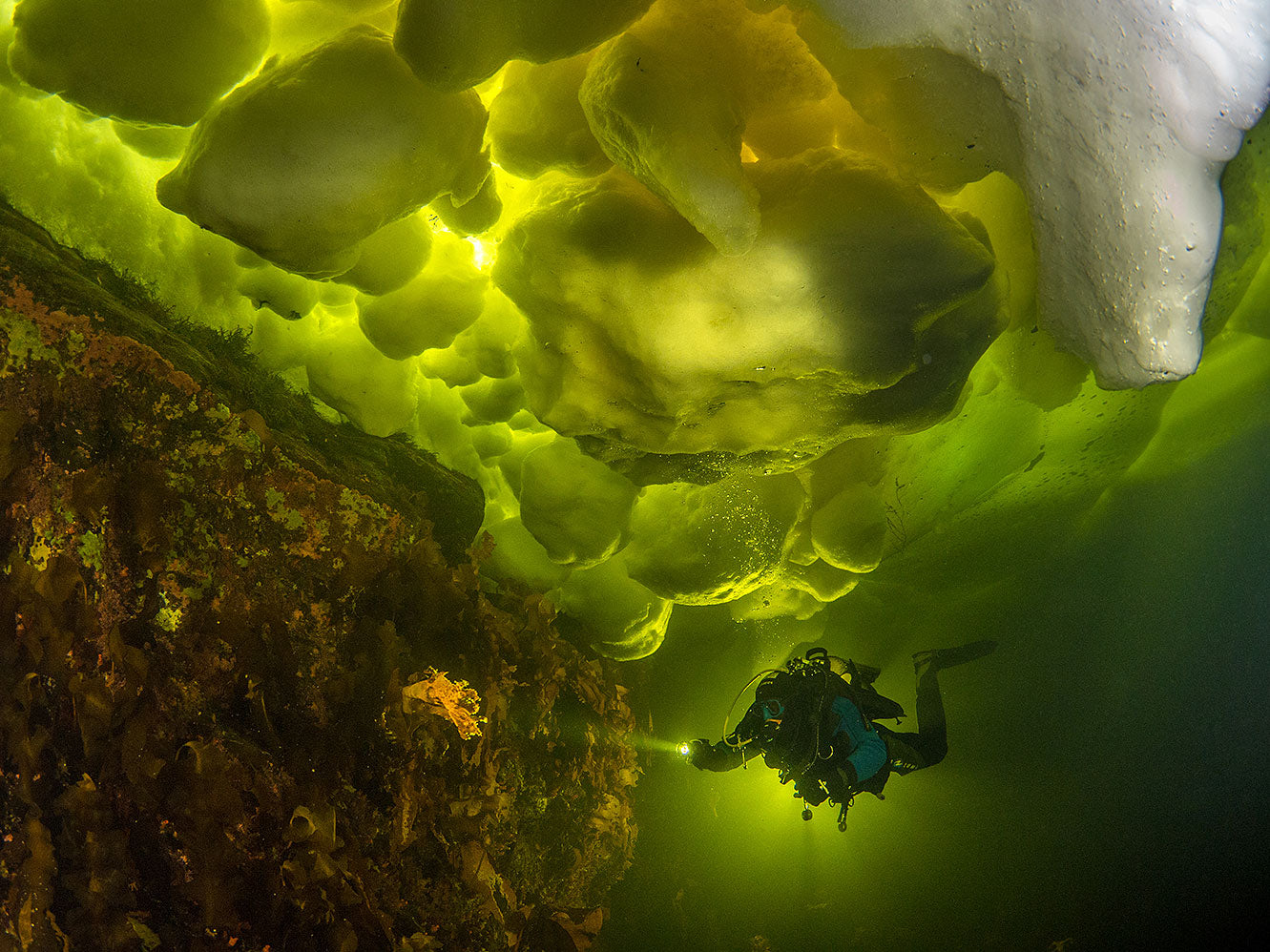
![Creature Feature: Scaly-Tailed Mantis Shrimp [VIDEO]](http://www.ikelite.com/cdn/shop/articles/andrew-raak-mantis-shrimp_94754176-7954-412a-9f20-91d25ce4ab60.jpg?v=1645897544&width=2000)
![Diving Bikini Atoll and the Legacy of US Nuclear Testing [VIDEO]](http://www.ikelite.com/cdn/shop/articles/klaus-thymann-bikini-atoll.jpg?v=1645896851&width=2000)